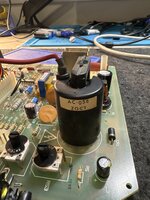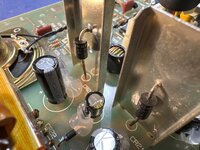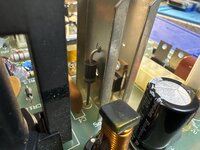So, despite my temporary pause on acquiring new machines because of the massive pile of filthy macs in my workshop, what appeared to be a Mac 128k popped up on FB marketplace and I decided to pull the trigger since the price was good.
However, since I don’t think you can actually tell in without opening if it was upgraded to a 512k, it was a bit of a gamble. Just got home with it and it appears to be a 128k logic board (Yay!). However, it doesn’t look like it is a completely original 128k (Boo!). It appears they piggybacked a socket with another 74F253 on top of one of the 74F253 chips labeled AS253 (located at F3), added some resistors and jumped some connections from over by the CPU.
Any idea on what it is and why it was done? Also, any thoughts on if I can reverse it to go back to stock.
Here are some photos:



However, since I don’t think you can actually tell in without opening if it was upgraded to a 512k, it was a bit of a gamble. Just got home with it and it appears to be a 128k logic board (Yay!). However, it doesn’t look like it is a completely original 128k (Boo!). It appears they piggybacked a socket with another 74F253 on top of one of the 74F253 chips labeled AS253 (located at F3), added some resistors and jumped some connections from over by the CPU.
Any idea on what it is and why it was done? Also, any thoughts on if I can reverse it to go back to stock.
Here are some photos:






